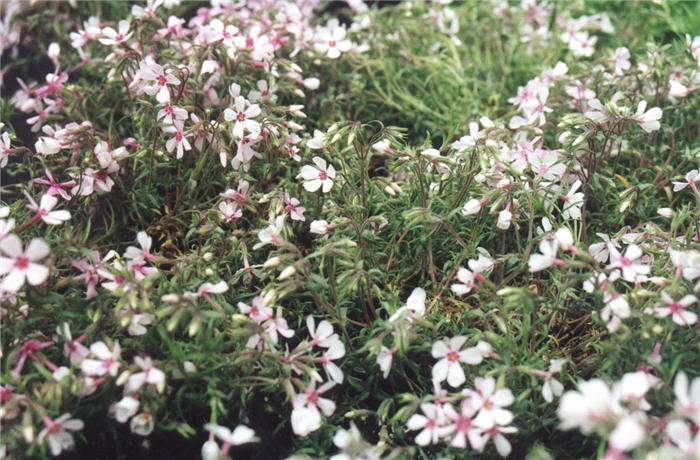| Botanical Name: Phlox subulata 'Apple Blossom' | |
| Common Name: Apple Blossom Moss Phlox |

-
Anatomy
-
Culture
-
Design
Plant Type
Ground cover, Perennial
Height Range
Under 1'
Flower Color
Pink, Multi-Colored
Flower Season
Spring
Leaf Color
Green
Bark Color
n/a
Fruit Color
n/a
Fruit Season
n/a
Sun
Full
Water
Medium
Growth Rate
Fast, Moderate
Soil Type
Sandy, Clay, Loam, Rocky, Unparticular
Soil Condition
Average, Rich, Poor, Well-drained, Dry
Soil pH
Neutral, Basic
Adverse Factors
n/a
Design Styles
English Cottage, Mediterranean
Accenting Features
Showy Flowers
Seasonal Interest
Spring
Location Uses
Entry, Perennial Border, Parking Strip, Raised Planter, Walls / Fences, Walkways
Special Uses
Mass Planting, Small Spaces
Attracts Wildlife
n/a
Information by: Stephanie Duer
Photographer:
Photographer:
-
Description
-
Notes
'Apple Blossom' is a creeping phlox cultivar with stiffish, needle-like, leaves on creeping stems. It forms a mat about 6 inches tall and 18 to 24 inches across. It blooms mid to late spring, and has pale pink flowers with a brighter, deeper pink eye. Use at the front of a sunny border, in a rock garden, or in the park strip.
Best grown in sandy-loam to clay-loam, medium to dry moisture, well-drained soils in full sun. Best flowering is in full sun, but plants tolerate some dappled sun. Good soil drainage is important. Plants grow well in sandy or gravely soils and tolerate hot, dry exposures better than most other species of phlox. Plants will self-seed in optimum growing conditions. Cut back stems after flowering by 1/2 to maintain form and promote denser growth plus to stimulate a possible light rebloom. Phlox's assets are its spring bloom, not its summer foliage, so plant it where its green mattiness during the summer months won't annoy.